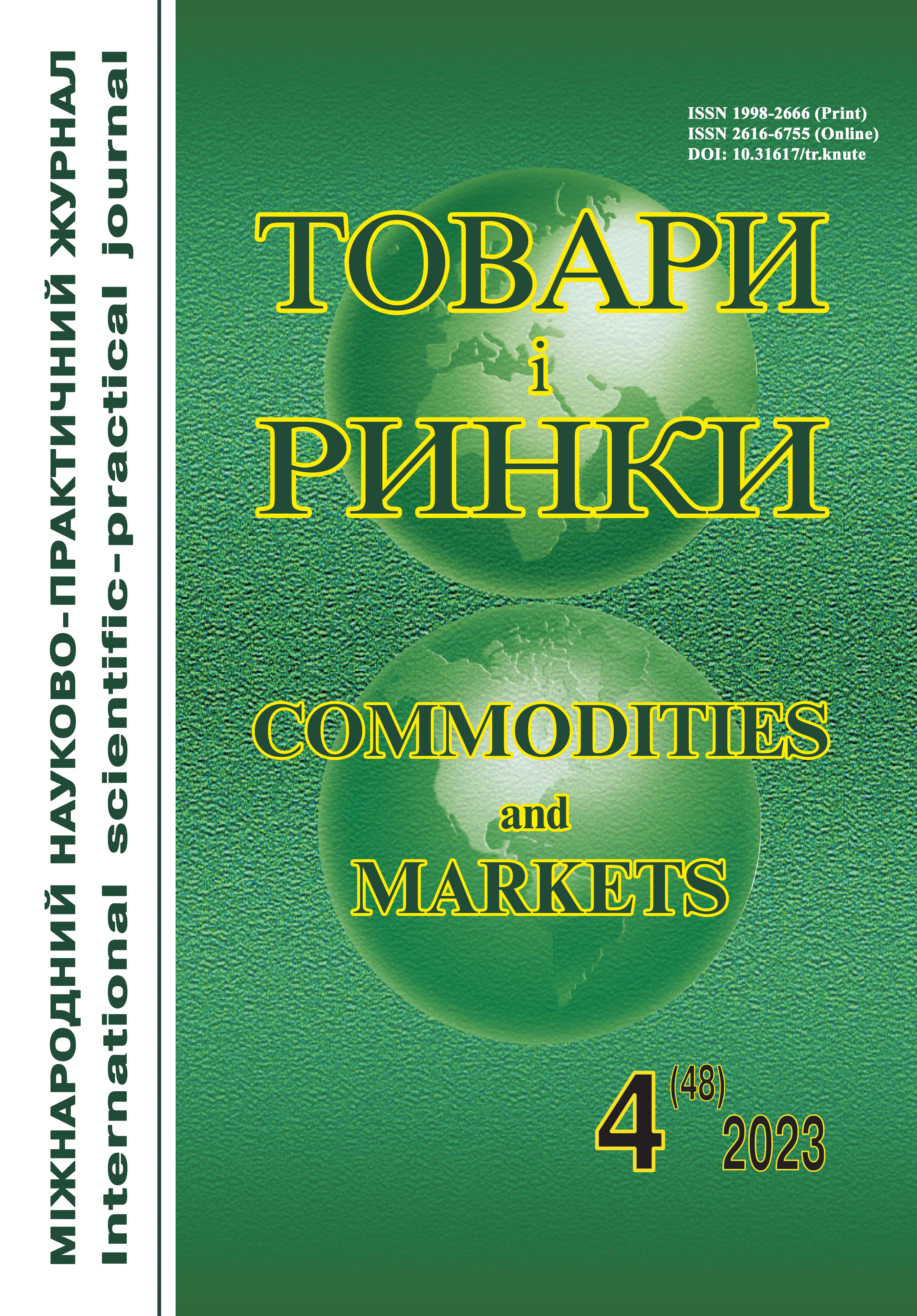Commodity assessment of clothing for newborns
DOI:
https://doi.org/10.31617/2.2023(48)05Keywords:
commodity assessment, quality indicators, safety, textiles, knitwear, clothing for newborns.Abstract
The quality and safety issue of textile products is always relevant for childrenʼs clothing, which has much more requirements than for adults. The requirements for comfort, practicality, quality, and safety of textile materials used in clothing production are essential. When choosing the fiber composition of materials for the manufacture of childrenʼs clothing, the focus is usually on natural fibers to avoid skin irritation of the child’s body. However, some manufacturers also use chemical, particularly synthetic fibers and textile fabrics based on them, due to their attractive cost and production efficiency. This may be the cause of a negative impact on the child’s health and well-being, complications in the formation of the body’s normal physiology, etc. Therefore, there is a need to assess the quality of products made of cotton, which are offered in the domestic market of childrenʼs goods. The aim of this article is to conduct a commodity assessment of clothing for newborns, which is sold in the network of "Epicenter K" LLC, in accordance with quality and safety requirements. The research result is a commodity assessment of clothing samples for newborns. The compliance of the researched clothing samples for newborns with the current regulatory requirements in terms of quality and safety indicators has been established. However, it was found that some samples did not comply with the product labeling requirements, making them unsuitable for recommendation for retail.
References
Che, J. (2021). A review: Sustainable material selection for Children's wear. Journal of Textile Science & Fashion Technology, 9(2), 68-86. https://doi.org/10.33552/JTSFT.2021.09.000708
Dirgar, E., & Oral, O. (2020). Evaluation of Baby and Child Clothes in Terms of Health and Safety. Turkish Journal of Fashion Design and Mana-gement, 2(1), 1-10.
International Organization of Standardization. (2016). Textiles - Tests for colour fastness - Part X12: Colour fastness to rubbing (ISO No. 105-X12:2016).
International Organization of Standardization. (2020). Textiles - Methods for analysis of woven fabrics construction - Part 6: Determination of the mass of warp and weft per unit area of fabric (ISO No. 7211-6:2020).
Oeko-Tex Standard 100. (2023, 28 Oct.). https://www.oeko-tex.com/importedmedia/downloadfiles/OTS100Standard_02.2023_en_de.pdf
Joint-stock company Ukrainian Research Institute for Processing of Artificial and Synthetic Fibers. (2004). Textile and leather materials and products for household use. Basic hygienic requirements (SSU 4239:2003). Consumer standard of Ukraine.
Bavyko, O. Je. (2016). Modern nomenclature of quality indicators for the examination of knitted products and the dynamics of the degree of their compliance in the products of Ukrainian manu-facturers. Trade and market of Ukraine, (39), 122-132. http://nbuv.gov.ua/UJRN/Tiru_2016_39-40_18
Galavska, L. Je., Gnatjuk, O. V. (2019). Develop-ment of an assortment of knitted products for preschool children using linen eco-raw materials. Bulletin of the Khmelnytskyi National University, 1(269), 63-69. https://doi.org/10.31891/2307-5732-2019-269-1-63-69
Zavorotna, O. A. (2022) Study of consumer characteristics of knitted material for the manufacture of children's clothing. Galavska L. Je., Zavorotna O. A. & Shvec V. G. (Eds.), Innovation in education, science and business: challenges and opportunities (pp. 145-152). Kyiv National University of Technology and Design. https://er.knutd.edu.ua/bitstream/123456789/22771/1/Innovatyka2022_V1_P145-152.pdf
Kaljuzhna, A. I. (2023). Commodity quality assessment of clothing for newborns. Mok-rousova O. R., Kaljuzhna, A. I., & Osyka, V. A. (Eds.), Entrepreneurship, trade, marketing (pp. 269-274). State University of Trade and Economics.
Marushko, Ju. V., & Shef, G. G. (2020). Hyper-thermia in children. Childrenʼs doctor, 3(72), 42-46.
Order of the Ministry of Health of Ukraine "On approval of State sanitary norms and rules "Textile, leather and fur materials and products. Basic hygienic requirements" № 1138 (2012). https://zakon.rada.gov.ua/laws/show/z0086-13#Text
Research Institute of Standardization of the State Enterprise "Ukrainian Research and Training Center for Standardization, Certification and Quality". (2006). Non-food products. Consumer labeling of light industry goods. General rules (SSU 4519:2006). Consumer standard of Ukraine.
Platonova, A. G., Jackovska, N. Ja., Shkarban, K. S., & Sajenko G. M. (2021). Determination of the main factors affecting the choice of children's clothing by parents and the duration of use of each layer of clothing during the day. Environment and health, 4(84), 73-77.
Polkovnychenko, S. O., & Korovinchenko, M. S. (2021). Assessment of the current state of development of the clothing market in Ukraine. Efficient economy, (6), 1-17. https://doi.org/10.32702/2307-2105-2021.6.85
Snisar, V. I., Surkov, D. M., & Obolonskyj, A. A. (2015). Physiology of breathing and respiratory support in newborns. Neonatology, surgery and perinatal medicine, 5(1(15), 94-103. https://doi.org/10.24061/2413-4260.V.1.15.2015.20
Ukrainian research and training center for problems of standardization, certification and quality. (2006). Sewing linen products. General specifications (SSU GOST 25296:2005). Consumer standard of Ukraine.
Ukrainian research and training center for problems of standardization, certification and quality. (2018). Textile. Color fastness test. Part X11. Color fastness to wet-heat treatment (SSU EN ISO 105-X11:2018). Consumer standard of Ukraine.
Ukrainian Research Institute of Textile Industry. (1996). Fabrics and woven products which are made by piece. Classification and nomenclature of quality indicators (SSU 3047-95). Consumer standard of Ukraine.
Ukrainian Research Institute of Garment Industry SPA "Lybid". (1993). Sewing and knitted products. Terms and definitions (SSU 2027-92). Consumer standard of Ukraine.




